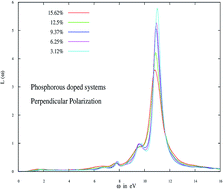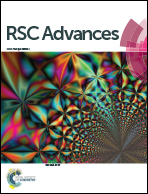Optical properties of P and Al doped silicene: a first principles study
Abstract
Here we study the optical properties of two dimensional pure, as well as doped, buckled silicene nanosheets using density functional theory in the long wavelength limit. Optical properties were studied by varying the concentration of substituted aluminium (Al), phosphorus (P) and aluminium–phosphorus (Al–P) atoms in silicene nanosheets. It has been observed that unlike graphene, no new electron energy loss spectra (EELS) peak occurs irrespective of doping type for parallel polarization. However, for perpendicular polarization two new, small yet significant, EELS peaks emerge for P doping. The origin of these new EELS peaks may be explained through the buckling effect of stable silicene. In addition, the calculations have revealed that the maximum values of the absorption coefficient of the doped system are higher than the pristine one. The study on reflectivity modulation with doping concentration has indicated the emergence of some strong peaks having the robust characteristic of a doped reflective surface for both polarizations of the electromagnetic field. Moreover, for all doped systems, the reflectivity modulation is restricted to low energy (<4 eV) and high energy (>8 eV) for parallel and perpendicular polarization respectively. Although no significant changes are noticed in the maximum values of optical conductivity with doping concentration in perpendicular polarization, a sudden jump appears for the Al–P codoped system at an 18.75% doping concentration. All these theoretical observations are expected to shed light on fabricating opto-electronic devices using silicene as the block material.


 Please wait while we load your content...
Please wait while we load your content...